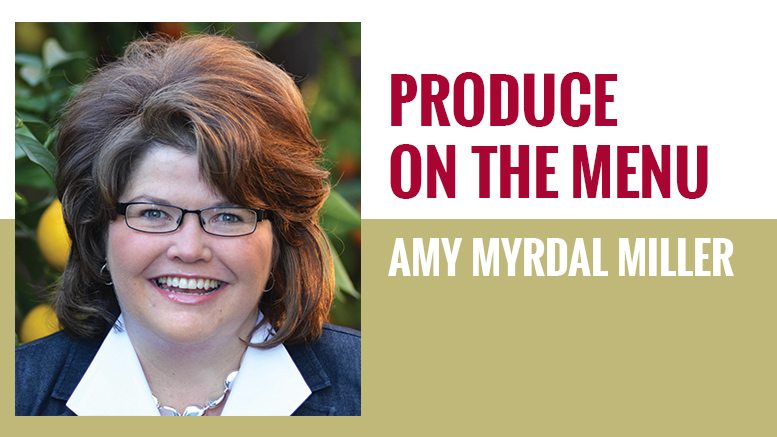Opportunities For America’s Most Loved Vegetable
October 2, 2019 | 4 min to read
America’s favorite vegetable is the potato, loved by nearly all demographics. In an interview with Greg Meeker from HZPC, he emphasizes the endless possibilities for innovative, plant-forward potato dishes, like Vada Pav and enhancements to fresh-cut fry programs. He believes the potato's perception as unhealthy needs rebranding, showcasing its versatility and flavor. With advancements in breeding, chefs are empowered to create exciting, nutrient-rich potato dishes, proving the sky's the limit for potatoes on American menus.

Originally printed in the October 2019 issue of Produce Business.
Data from foodservice research firm Datassential shows America’s favorite vegetable is the potato. This is true across all generations, ethnic groups, regions of the country, and those with or without kids. The only group where there is a slight drop in affinity is Asian-Americans — where only 97% say they love potatoes. Have restaurants satisfied our demand for the wildly popular potato, or is there more opportunity on the menu?
I recently interviewed Greg Meeker, North American business development director at HZPC, a potato breeding company based in the Netherlands that sells more than 50 varieties of seed potatoes to U.S. potato growers. Meeker is a professionally trained chef and former executive chef for Sysco. He used to spend time thinking about a wide variety of ingredients across the Sysco portfolio. Today, he’s fully focused on potatoes.
AMM: One of the biggest trends in menu development today is plant-forward innovation, putting more focus on the use of plant-based foods and less emphasis on animal-based ingredients. What opportunities are there to focus on potatoes in plant-forward menu development?
GM: Chefs have limitless opportunities to introduce potatoes, with ethnic twists in plant-forward preparations like Kimchi fries, curried fried potato salad, potato lo mein and gyro hash. Potatoes are gluten-free and can also be used to make flat breads and pizza crusts.
AMM: Even though we love innovation on menus, we also love familiarity. It’s comforting and reduces the risk of ordering something we won’t like. Chefs across the country are giving us innovation, with comfort by using French fries and tater tots in exciting new ways. New variations on poutine and “tatchos” are appearing on bar menus in all types of restaurants, from dive bars to high-end steakhouses. What’s the most exciting new menu item you’ve seen with potatoes the past few months?
GM: It’s an Indian street food called Vada Pav, a potato dumpling infused with fragrant chilies and aromatic Indian spices rolled in garbanzo bean flour and fried until crispy. It’s served inside a bread bun and accompanied by both sweet and savory chutney. I like mine somewhat spicy — with Major Grey mango chutney for the sweet and tomato chutney for the savory accompaniment. They are outrageously good. I’m told they’re also called Bombay Burgers. Call it what you like; I call it amazing.
‘I think the biggest opportunity for the potato is to have it stripped of the misperception they are unhealthy and boring, and they are only good mashed with lots of cream and butter or baked and “loaded.” ’
— Greg Meeker, HZPC
AMM: Fresh is the most commonly used menu descriptor on American menus. It’s a powerful term that consumers associate with better-for-me attributes. What are the opportunities for potatoes to capitalize on “fresh” marketing? Is there room for more innovation and improvement in fresh-cut French fry programs?
GM: I think the biggest opportunity for the potato is to have it stripped of the misperception they are unhealthy and boring, and they are only good mashed with lots of cream and butter or baked and “loaded.” The potato varieties that we develop have sensory traits that create wonderful eating experiences on their own. We have varieties that are buttery without added butter, allowing the potato to be the star of the show without a lot of extra work or added ingredients. To me, this is the essence of ‘fresh’ — taking great ingredients and creating memorable flavor experiences, with as few ingredients as possible.
In terms of fresh-cut fry programs, there is a huge opportunity for innovation and improvements. Many establishments try to implement a fresh-cut fry program but fail because the methods to achieve success sound easy but require both skill and proper potato selection. As we introduce and educate customers about varieties developed for optimal frying and minimal enzymatic discoloration, the task becomes less daunting and more prone to being successful.
AMM: What do you see for the future of potatoes on American menus? How are breeders helping chefs solve challenges and giving menu R&D leaders new inspiration for innovation?
GM: The sky is the limit for potatoes on American menus. So many new methods and creative energy are being put into their preparation. Potatoes have the advantage of not being trendy, like kale and Brussels sprouts; they are a staple whose versatility is only now being appreciated. They fit with many world cuisines and can be the main ingredient for any multi-course meal.
Chefs today are very fortunate to be working during a time where breeders are creating and adapting potato varieties that have unique colors, appealing sensory traits and are optimized for specific cooking methods. We chefs used to be limited to potatoes in just three colors (white, yellow, red) ,with limited cooking versatility (baking, boiling, frying). Chefs and scientists are now powerful partners in elevating the awesome, nutritious and versatile potato, which allows it to be a star on American menus.

Amy Myrdal Miller, MS, RDN, FAND is a farmer’s daughter from North Dakota, award-winning dietitian, culinary nutrition expert, and founder and president of Farmer’s Daughter Consulting, Inc. She is the director of The Culinary Institute of America Healthy Menus R&D Collaborative and a consultant for the Produce for Better Health Foundation. You can learn more about her business at www.farmersdaughterconsulting.com, and you can follow her insights on food and flavor on social media @AmyMyrdalMiller
6 of 18 article in Produce Business October 2019

